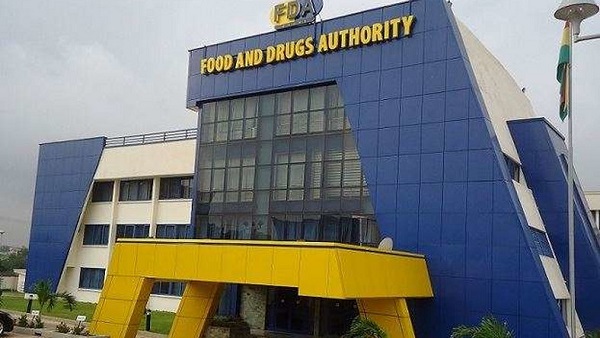Understanding the Costs Involved in Water Damage Restoration Services
Water damage can be devastating for any homeowner, leading to significant structural damage, potential health hazards, and the need for immediate action. Whether caused by a natural disaster, burst pipes, or a faulty appliance, water damage demands professional intervention to restore the property to its original state. However, the costs associated with water damage restoration […] The post Understanding the Costs Involved in Water Damage Restoration Services appeared first on MyNewsGh.

Water damage can be devastating for any homeowner, leading to significant structural damage, potential health hazards, and the need for immediate action. Whether caused by a natural disaster, burst pipes, or a faulty appliance, water damage demands professional intervention to restore the property to its original state. However, the costs associated with water damage restoration services can vary widely, depending on several factors. We will explore the key components that influence these costs, helping homeowners better understand what to expect when faced with the need for water damage restoration.
Factors Influencing Water Damage Restoration Costs
The costs associated with water damage restoration services are influenced by various factors, including the extent of the damage, the type of water involved, and the specific services required to restore the property. One of the primary factors is the extent of the damage. A minor leak that is promptly addressed may only need essential water extraction and drying services, while extensive flooding can lead to significant structural damage, requiring more comprehensive restoration efforts. The severity of the damage can also impact the time and resources needed for the restoration process, further driving up costs.
The type of water involved is another critical factor. Water damage is typically categorized into three types: clean, gray, and black. Clean water refers to water from a sanitary source, such as a broken water line or a faucet. Gray water is slightly contaminated and may come from washing machines or dishwashers. Black water is highly contaminated and can contain harmful bacteria and pathogens, often resulting from sewage backups or flooding from natural disasters. Restoration efforts for black water damage are more complex and require additional safety measures, which can significantly increase the overall cost.
Additionally, the specific services required to restore the property are crucial in determining costs. Essential services may include water extraction, drying, and dehumidification, while more extensive damage may require mold remediation, structural repairs, and replacement of damaged materials. The need for specialized equipment, such as industrial-grade dehumidifiers and air movers, can also impact the overall cost. Furthermore, the location of the property and the availability of restoration professionals in the area can influence pricing, as areas with a higher cost of living or limited service providers may have higher restoration costs.
The Role of Insurance in Covering Costs
Insurance coverage plays a significant role in managing the costs of water damage restoration services. Most homeowners’ insurance policies cover water damage caused by sudden and accidental events, such as burst pipes or appliance malfunctions. However, coverage for water damage from natural disasters, such as floods or hurricanes, may require separate flood insurance. Understanding an insurance policy’s specific terms and conditions is essential for homeowners to determine what is covered and what out-of-pocket expenses they may incur.
In some cases, insurance companies may have preferred water damage restoration services vendors. These vendors often have agreements with the insurance company to provide services at a predetermined rate, which can help reduce the overall cost for the homeowner. However, homeowners also have the option to choose their restoration service provider, although this may impact the amount covered by the insurance policy. It is essential for homeowners to thoroughly document the damage and the restoration process, as insurance companies may require detailed records and receipts to process claims.
Homeowners should also be aware of potential exclusions and limitations in their insurance policies. For example, damage resulting from neglect or failure to address a known issue, such as a slow leak, may not be covered. Additionally, some policies may have caps on the amount they will pay for specific types of damage, which could leave homeowners responsible for covering any additional costs. Understanding these nuances can help homeowners make informed decisions about their restoration services and manage their financial responsibilities effectively.
The Importance of Timely Action in Cost Management
Timely action is crucial when dealing with water damage, not only to minimize further damage but also to manage costs effectively. The longer water damage is left unaddressed, the more extensive and costly the restoration process can become. For example, standing water can lead to mold growth within 24 to 48 hours, complicating the restoration process and increasing costs significantly. Additionally, prolonged exposure to water can weaken structural components of a property, such as walls, floors, and foundations, leading to more extensive repairs and higher costs.
Immediate water extraction and drying are essential steps in the restoration process. Removing water as quickly as possible helps prevent further damage and reduces the risk of mold growth. Professional restoration services use specialized equipment, such as industrial-grade dehumidifiers and air movers, to accelerate the drying process and ensure that all affected areas are thoroughly dried. This timely intervention can help mitigate the overall damage and reduce the restoration cost.
Moreover, addressing water damage promptly can help homeowners avoid potential health hazards. Water damage can lead to the growth of mold and mildew, which can cause respiratory issues and other health problems, especially for individuals with allergies or asthma. By taking swift action, homeowners can protect their health and safety while managing the costs associated with mold remediation and other health-related concerns. In summary, timely action is a critical factor in controlling water damage restoration costs and ensuring the property’s long-term integrity.
Understanding the costs involved in the Sarkinen Restoration team for water damage restoration services requires thoroughly examining various factors, including the extent of the damage, the type of water involved, and the specific services required. Insurance coverage is vital in managing these costs, but homeowners must know their policy’s terms and limitations. Timely action is essential in minimizing damage and controlling restoration costs. By understanding these critical aspects, homeowners can make informed decisions and effectively manage the financial impact of water damage restoration.
The post Understanding the Costs Involved in Water Damage Restoration Services appeared first on MyNewsGh.
























































